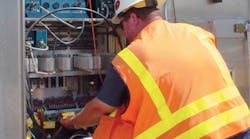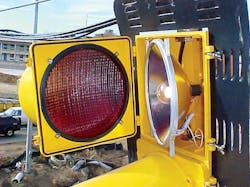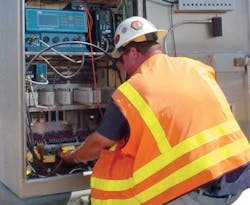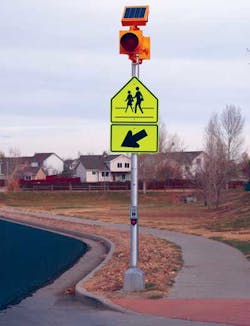Ever wonder how individuals receive training on traffic signal installations — or who does the coordination and maintenance of these systems to keep them running smoothly? If you thought the local traffic department, you would only be partially correct. Many municipalities around the country subcontract the installation and maintenance work out to local electrical contractors.
The first traffic signals on record, used in 1868, were red and green gas lamps operated by a police constable. Two semaphore arms extended horizontally and used the words “stop” and “caution” to help direct people, horses, and horse-drawn buggies. The first manually controlled traffic lights were introduced in 1913 — with automated lights making their first appearance in 1920. The installation and maintenance of traffic signal systems have evolved considerably since then.
For many years, traffic signals were controlled by electrical or mechanical devices, but with the advent of the microprocessor, they are now programmed and controlled by computer systems. Traffic signal control systems are designed around a communication system that ties individual intersection signals together through a central computer system — or a series of computers — that can coordinate the timing sequence of multiple intersections. The main objective of these systems is to provide convenient signal coordination to motorists. Not only are computers being used to control the sequencing of the signals, but some locations are also using solar panels to energize signals and warning devices in remote areas where power may not be readily available.
The safe installation, operation, and maintenance of traffic signals and public warning systems are important responsibilities for all municipalities. Today, more and more municipalities are asking electrical contractors to assist in the programming and maintenance of these new and advanced systems.
So how do you capture your share of this market? Your first goal should be to take part in training courses that build upon and expand your knowledge of this topic. A traffic signal related training class should include topics such as: flagging, signs, and barricades (setting-up a work zone); traffic signal hardware and equipment; rigging fundamentals, phasing and traffic flow; traffic signal and intersection job layout; traffic signal cabinets and equipment; traffic signal cabinet print reading; traffic signal controllers; and troubleshooting traffic signal systems. Other topics that might be covered include fiber optics, solar, and closed-circuit TV systems.
Traffic signal technicians need to be skilled in many areas, such as rigging, where they will be required to lift heavy and awkward equipment, such as poles and traffic signal mast arms. They need to know what is required to set up a traffic work zone area and the hazards of working in such an area. Being adept at working with computer programs and programmable controllers is also a must because many municipalities rely upon electrical contractors to provide services that include the programming and maintenance of all electrical equipment.
How do you get trained in this area if you’re not quite sure about the skill set? Most training for traffic signal technicians takes place on the job, but there are certain areas, such as electrical theory, federal and state codes and regulations, blueprint and control drawings, and best safety practices, that take place in the classroom. There are also new interactive training videos featuring enhanced classroom teaching, thus making the classroom experience more effective.
After you complete training, you should seek out certification from a nationally recognized organization. For example, the International Municipal Signal Association (IMSA) is the oldest traffic signal installation and maintenance agency in the United States, having been in existence for more than 116 years. It is recognized as the leading agency for certifying individuals in the installation and maintenance of traffic signals nationwide. The IMSA work zone safety and traffic signal
Level I certification is required on many traffic signal type projects across the United States.
Many electrical contractors view traffic signal installation and maintenance work as specialty work, but this is not necessarily accurate. There are many opportunities for today’s contractor — whether it is in the installation of new intersections, maintenance of these intersection systems, installing fiber optic cable for closed-circuit TV systems, or installing solar equipment to power equipment in out-of-the-way locations.
Anderson is the director of line construction curriculum development and training for the NJATC, Upper Marlboro, Md. He can be reached at [email protected].





